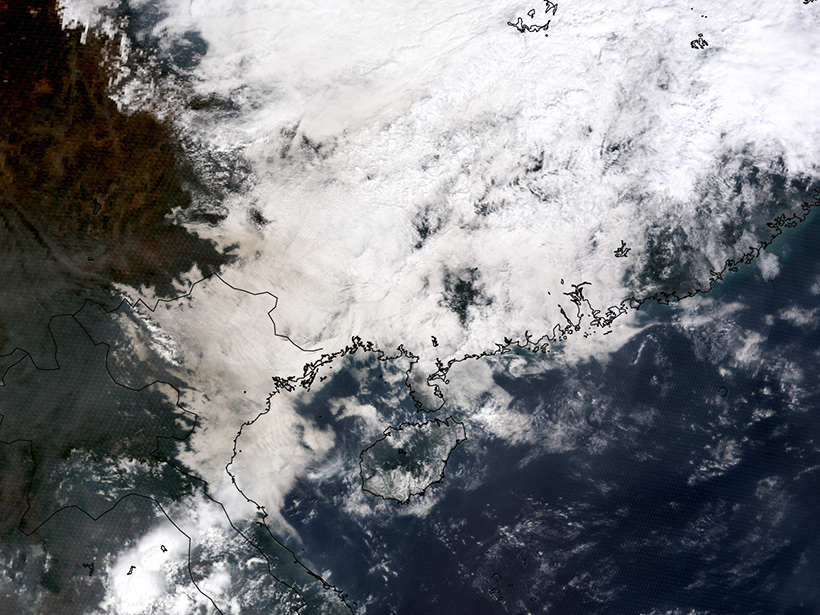Source: Journal of Geophysical Research: Atmospheres
Individual aerosol particles are small, but, cumulatively, they can have a mighty effect. Aerosols, which can be man-made or produced naturally, are typically found in the lower atmosphere. Together, they tend to have a cooling effect on surfaces below them by reflecting sunlight back into space. However, the strength of this cooling effect can differ depending on what’s below. For instance, aerosols found above bright, reflective clouds can have different radiative effects than the same aerosols above a darker land or ocean surface.
Current space-based, remote methods that detect aerosol coverage do not take into account the aerosol optical depth—the degree to which aerosols can prevent the transmission of light—above clouds. Most existing satellites do not detect above-cloud aerosol optical depth under cloudy conditions, creating significant data gaps in satellite-derived records. Neglecting aerosol calculations can lead to biases in measuring the cloud optical depth, which correlates with how much light can pass through the atmosphere, and cloud particle sizes.
In a new study, Sayer et al. devised a preliminary algorithm to calculate aerosol abundances above clouds, to be incorporated into a future version of the Deep Blue program—a project that currently retrieves clear-sky aerosol optical depths over land surfaces using various satellite sensors. Because most real-world aerosols are produced from smoke or dust, and the properties of these aerosols can vary widely, the team built the new algorithm to take into account six types of aerosols: four typical of smoke produced from burning fires, and two different kinds of mineral dust.
The researchers tested the proposed algorithm with NASA’s Ames Airborne Tracking Sunphotometers, which measure direct transmission of sunlight and are used to determine aerosol optical depth with low uncertainty. The photometers were flown above Namibia during the dry season—when fires are common due to agricultural practices—in September 2000 and above Japan and Korea in May 2001 during research flights. The readings were compared with measurements taken by the Moderate Resolution Imaging Spectroradiometer (MODIS) aboard NASA spacecrafts.
The authors report that the modified algorithm performs best for clouds with an overlying, strongly absorbing aerosol layer. Meanwhile, thinner or weakly absorbing aerosol layers generated more uncertainty. (Journal of Geophysical Research: Atmospheres, doi:10.1002/2015JD024729, 2016)
—Wudan Yan, Freelance Writer
Citation:
Yan, W. (2016), Measuring atmospheric aerosols despite the clouds, Eos, 97, https://doi.org/10.1029/2016EO053457. Published on 02 June 2016.
Text © 2016. The authors. CC BY-NC-ND 3.0
Except where otherwise noted, images are subject to copyright. Any reuse without express permission from the copyright owner is prohibited.

